
Opitz Makes Bad Dreems Come True
Mark Opitz’s production techniques are simple, effective and all about clarity. Perfect for letting the political rage of Bad Dreems shine through on Gutful.

Artist: Bad Dreems
Album: Gutful
When Bad Dreems were putting together a list of producers they’d like to work with ‘dead or alive’, they started by dreaming big, writing down names like Martin Hannett — the Factory Records partner who well and truly passed away in 1991. Then Mark Opitz came up. They weren’t sure which side of the mortal coil he resided on, but put him down anyway.
“Around that time I was reading the book he had out,” said guitarist Alex Cameron, talking about Opitz’s ‘bi-epic’ Sophisto-Punk. “We were like, ‘We think he’s still alive but haven’t really heard anything he’s done lately.’”
Opitz is, in fact, well and truly alive, and still actively producing and engineering — mostly out of Colin Wynne’s Thirty Mill Studios in Melbourne. He also recently signed on for a visiting fellowship with the Australian National University. The band excavated his details from the internet and sent him an email. “He liked the music and that was it, basically,” said Cameron.
The band has recorded two albums now with Opitz, the first was Dogs at Bay, which followed on the heels of their succession of singles getting Triple J airplay. The second is Gutful, another powerhouse Aussie release in the pub rock/garage tradition with boatloads of killer melodies.
WALKING IN WALKER’S SHOES
Despite being a pillar of the Australian music scene, the pub rock playing field is surrounded by stigma, something the band was aware of when they worked with a guy famous for recording bands like AC/DC, Cold Chisel and The Angels.
“I didn’t realise how much of a role he’d played in the lineage of Australian rock,” said Cameron, who dug up Opitz’s diverse range of credits in his research, which includes pop bands like The Reels. “I read how The Triffid’s Wide Open Road was his favourite Australian song. What came out of all that for us is how he was really into song craft. We’re a band based around songwriting so we thought he’d be a good fit. There’s a stigma attached to those iconoclastic bands like Cold Chisel. Nevertheless, Don Walker’s songwriting and the musicianship in that band is superlative. Once we talked to him we realised he wasn’t just some old rocker whose palette didn’t stretch beyond that stuff.”
Opitz happily places Cameron in a similar league to Walker. “He’s one of the smartest songwriters I’ve met,” said Opitz, who’s not going to wax on about just anyone. “You meet a lot of good songwriters in your career. I worked with Don Walker early on, and Dave Faulkner from the Gurus — even though we’ve never been the best of mates and we fought all the way through the album we did together, he’s a great writer.
“Bad Dreems is the first time I’ve worked with an Australian band with an Australian accent where I’ve thought, ‘this is not cringe worthy’, said Opitz, pointing out most classic Aussie bands didn’t feature that drawl. “Crocodile Dundee, that’s cringe worthy!

BELIEVING IN THE DREEMS
Escaping cultural cringe is all about authenticity. In music these days, proponents of Aussie accents can be as about as subtle as walking around New York wearing an Akubra with a Bowie knife strapped to your waist. Opitz says there’s only one way to avoid cultural cringe. “I always give singers a simple piece of advice: ‘All I’ve got to do is believe what you say.’ Don’t worry about trying to sound like Aretha or be like someone else, just make me believe what you’re saying. The simpler you can be in the studio with advice and approaching problems, the better it is.”
As you might expect, Opitz doesn’t have a rule book. While that ‘ignore all influences’ advice might work for one performer, the opposite might be true for another. When he told the story about getting Jimmy Barnes in the right frame of mind for a vocal on Flame Trees, he used Aretha as a guide. “He played me the middle bit where he talks, ‘Who needs that sentimental bullshit, anyway? It takes more than just a memory to make me cry.’ He said, ‘I’m not too happy with that, I don’t know what to do with it.’ I said to him, ‘What would Aretha do?’ Two seconds later he was in the studio in front of that mic and we had the take like that.”
Production requires as much application of psychology as it does song craft, and Opitz is a master — even when he doesn’t look like he’s doing much. “There’s a quote about people who are masters of something, how they seem to do nothing at all,” said Cameron. “Colin does a lot of hands-on stuff, touching the computer. Opitz sits back and is about getting the vibe and feel right. He’s definitely not an overbearing hands-on kind of guy. He sits back and makes sure the whole thing is heading in the right direction.”
Occasionally that chilled approach would get to Cameron: “He has this little laptop setup to the side of the main mixing desk. He’s into photography, so he was putting on this slideshow of his own photographs and he put on this AC/DC track from one of the early albums. It’s not a good track, I don’t like it at all. But he just kept playing it on repeat after repeat just sitting there looking at all these photos.
“We were asking stuff about the parts and he was just vibing out to his own photos for hours. Anyway, we finished tracking and they finished mixing the song and sent it to us the next day. We said, ‘Oh this is awesome I love how it sounds kinda ’70s rather than the songs we’ve done prior which sounded a bit more heavy.’ And he’s like, ‘Yeah that’s why I was playing that song just to get everyone in the right vibe.’”
Opitz showed me the photos. He didn’t put those on intentionally, they’re just a slideshow of his iPhoto library that happens to be worth watching because he’s an enthusiast photographer who’s spent his life travelling the globe. The AC/DC track? Now that was absolutely purposeful. “I just started playing it in the background every day to start the recording of the album,” said Opitz. “I was playing it to surreptitiously get a vibe going. I found that funny because he said to me on the phone, ‘Hey guess what? Someone actually believes you played that in there just to vibe us up.’ I said, ‘You f**kin’ idiot, that’s exactly what I was doing!’”
The first thing I explain to the band is that I want them to be a band. That means you play as a band. Laying down parts separately to a click track is not being a band!
RECORDING HATS ON
Thirty Mill Studios is in a single-storey Brunswick house. Separation is just a matter of spreading instruments out over the various rooms; control room in the front bedroom, the lounge room is the live room with a vocal booth built into the corner, and amps are spread out over the other bedrooms.
“It feels halfway between being in a studio and DIY recording at home,” said Cameron. “We slept in the house and used the kitchen during the four sessions, it was a cool middle ground.”
All the action happens in the lounge room with everyone standing around the kit and Ben Marwe singing and playing guitar in the vocal booth while looking through the window.
“The first thing I explain to the band is that I want them to be a band,” said Opitz. “That means you play as a band. Laying down parts separately to a click track is not being a band! Once we’ve talked about what song we’re going to do, and go through any areas I’m not happy with, then I’ll get everyone to play a set. Six, seven songs, whatever. Doesn’t matter. Whack them down and hit record. I’ll make a cup of tea, they get their headphones sorted out. More importantly, I’m using it to get them warmed up and in a natural position to record. We record everything from the first warm-ups. Because we don’t record demos, we don’t record singles, we don’t record albums… we record. That way you don’t come into the studio thinking, ‘I must wear my recording hat, or my single hat today.’ I want you to come in with your band hat and be a band.”
OPITZ THE GUITAR TZAR
Having that time to get headphone sends just right was a big part of the vibe for Cameron: “The thing that seems to stuff up recording sessions is if you don’t have very good feeds. Some people plug your guitar straight into the desk or amp sims. The way Colin and Mark set it up, it feels almost as good as the amp being in the room with you.”
Tracing the signal path back to the source, it all starts with the amp. Ever since Opitz went through AC/DC’s entire Marshall backline matching heads to cabs for Vanda & Young, he’s developed a knack for choosing amps and getting the most out of them. Cameron mostly uses a custom shop ’63 Fender Stratocaster, as well as a 1977 Gibson 335, while a Gretsch White Falcon was occasionally dug up for a few clean licks. They had a ’65 Fender Twin Reverb in the studio, but mostly used a ’70s Marshall JMP through a 1960 quad box. “When I first had a Stratocaster I didn’t really know what I was doing,” said Cameron. “I was trying to get it to sound like a Jazzmaster or Telecaster — thinner and brighter. Over time my sound developed and I’ve always kept the Stratocaster. I’ve always shied away from Marshalls before, but playing the Stratocaster through it was revealing. With this type of music we wanted to avoid any guitar effects, just plug a guitar into a good amp and rely on your playing to get the nuances across.”
Opitz has his guitar miking technique locked down, but it must be applied exactly right, which is why he still takes care of miking amps even when Colin’s engineering. “I use my tried and true method, which combines a Shure SM57 and AKG C414,” said Opitz. “A dynamic to capture the peak heavy mid range and a condenser for the low and high end. I take my torch in and spend a lot of time in front of the cab. I set them up directly in front of the speaker with the capsules exactly in phase and angled in 45 degrees from the centre line. They’re aimed exactly halfway between the centre and the edge of the speaker. Keeping them at 45 degrees tells me how far out I’ve got to be. I’m still getting that treble powering right in from the middle, it’s just coming in off-axis. I’m also getting every bit of bottom end that thing can give me because I’m looking straight at the deepest edge of the cardboard cone.”
Cameron found out the hard way how exacting that positioning has to be. “I went in there to change the amp settings and obviously knocked the mic when I was doing it,” he recalled. “When he started playing the tape he’s like, ‘Something’s not right!’ Then he went in there and saw the mic and went absolutely troppo!”
“With my method, the one thing it guarantees, is the sound you produce is the sound you’re going to get,” said Opitz. “Good, bad, indifferent — don’t give a s**t, that’s the sound it’s going to be.”
It hasn’t always been a 414; he came across that combination by accident. He used a Neumann 47 FET on AC/DC’s Powerage, because the valve in a U47 would get microphonic. Then he switched to the 414 after using its predecessor, a C12A, to record the Sydney Symphony Orchestra. “I had a stereo pair maybe 15 feet above the floor,” explained Opitz. “One dropped and hit the floor. I put it back up, turned it back on and it worked like a f**king charm. I thought, ‘That has got to be the f**king toughest microphone in the world, and that’s why I chose it.”
Once he’s got both mics set up, he puts it through the hybrid 1073/1081 channel strips on the Custom Series 75 Neve-powered console, leaving the EQ flat and adjusting the levels to match so he can flip the phase of one to check it’s in alignment. If it mostly disappears, he’ll flip the phase back and balance the sound he wants with the mic preamps and print both mics to one track, keeping the separate mic tracks just in case.

PHASES OF RECORDING
“Phase relationships are massive, just as big as music notation to me,” said Opitz. “Say we recorded the bass onto two tracks through a DI and a mic. First thing we do is isolate and listen to those tracks then drag the one that’s behind to meet the one in front. Sometimes it’s very minor, but the difference it makes in the sound is major.
“There’s two other things you’ve got to watch when you record. One is making sure the resolution is strong enough and you get enough of it in there. The other is watching out for extra bottom end. You can’t hear it but the tape recorder or hard drive can hear it. It takes up space and affects any compression you’re going to be using. You can’t hear it, but the compressor doesn’t know that. Once it’s affecting the stereo bus compressor, it’s affecting everything.”
It’s the same principle with the drums — no EQ on the way in, just phase checked and low end rolled off where it’s not required. The drums usually sit at one end of the lounge room, at the centre of an arc formed by the foam-filled bay window. “We know what works on most kits,” said Opitz. “A couple of 57s on snare, probably out of phase. Sennheiser MD421s on the toms, maybe a condenser on a bigger floor tom. I put it off the rim to keep it out of the way of the drummer, because it’s about the performance. I also put it on a shallow angle, because if you get the centre you’re going to get the impact but not the resonance.The microphone is going to hear the stick hitting the bloody drum but what you really want to hear is the effect it’s having on the drum. So rather than coming in at a higher angle and getting a sharper sound, I’d rather get a longer sound at a narrower angle. If we got a FET condenser that doesn’t break up, we might put it on the kick drum. There’s no EQ done at all, except for maybe roll-off going to tape. I know I’m not gonna need 80 cycles and under on the hi-hat for a start!”
OVERDUBS: LET IT BLEED
When the band hits a take everyone’s happy with, the overdubbing process happens fairly quickly. It begins with James Bartold dropping in the odd bass fix with Colin, while everyone grabs a drink. Then Cameron will have a crack at a solo. “He’ll play shit solo after shit solo after shit solo,” said Opitz. “Then we’ll talk about it and he just pulls this part out of nowhere that’s genius. He knows when to write and also knows when to not write any more and be ‘stream of consciousness’. It’s quite amazing to watch. ”
For vocals, Opitz will let Marwe out of the vocal booth sweat box and set the SM7 up at the same foam-backed point where the drums usually sit. “Out there he can have a bit more room at the table,” explained Opitz. “I actually prefer singers in the sweat box a lot of the time because they get into their own world as well as get really hot. You’ve just got to be careful because your use-up factor timer is on.”
Right at the beginning of the album, on Johnny Irony there’s the sound of someone screaming ‘Just do it live!’ That wasn’t Opitz blowing a fuse, it was Cameron… in his underpants. “There’s that Bill O’Reilly clip from ages ago,” he explained, referencing the ex-Fox News anchor. “Something’s f**king up with his autocue. He gets more and more angry, and screams, ‘F**k it, I’ll just do it live!’ It’s something we always say to each other. Ben was doing the vocals for it and he wasn’t really getting it, so I was trying to get him fired up. It was an overdub and he wasn’t in his little vocal booth, he was standing in the middle of that room by himself. I went out of the control room, waited till he was about to start doing a take and stripped all my clothes off and ran in there and started dancing around! Somehow during that process I gave myself a blood nose so that’s why you hear him say, ‘Are you bleeding?!’”
CLEAR ABOUT CLARITY
Opitz’s restricted use of EQ and compression on the way in is part of his renewed approach to maintain clarity. He’s always been intent on using the right gear at the right time; whether it’s analogue or digital, yesteryear or yesterday’s technology. Lately, Opitz feels we’ve been missing the point of digital recording formats.
“I’m trying to get technique back to as simple as possible because now we’ve got a clarity in digital we’ve never had before,” explained Opitz. “In my mind, the best way to use that clarity is as clarity, not to try and reinvent it. When we had analogue, of course, we had albums like Sgt. Pepper’s and tried to make noises no-one had ever heard before because we’d done all the rest. We couldn’t go anywhere else. That’s all the medium would allow us to do.
“Now we’ve got a recording medium that allows us to get equal value from analogue and digital. That’s why I say to people, don’t say you’re digital or analogue, be thankful both exist because they each have such strong values.”
Next to the console in the control room sit racks of outboard that includes ELI Distressors — “pound for pound, they gotta be the best compressors you can get. They have to be. They’re so transparent, yet so effective. You can make things sound fat with them without having them go small.” An Al Smart C1 compressor — “I’ve made a fortune off that f**king company. It’s been on my life’s work and makes anything sound good.” Manley VoxBox, UA 1176s and hardware SPL Transient Designers — “If I ever use them, it’s on weak drummers. Mainly on the tom hits; I don’t want to replace it if I can work around it.” He’s also got a Neve stereo compressor, which was a present from Tom Misner, and a Bricasti M7 — “Throughout my recording life, every now and again I can point to a piece of gear and put a tick on it. That’s one of them. I only use one sound; NonLin B. It’s better than the original version, the AMS RMX16 — another bit of gear I made a lot of money on. The Bricasti is a lot more subtle. You can’t tell it’s a reverb. It does what I always wanted the other one to do; it lengthens the note. Its latency is not so bad that you can mix it into the snare and it sounds totally natural — like there’s no reverb on it at all. The note just got fatter and bigger.”
That’s why I say to people don’t say you’re digital or analogue. Be thankful both exist because they have such strong values
WHEN TO ANALOGUE
Opitz loves the broad tone shaping of analogue gear, lauding the ability of a piece of kit like the Custom Series 75 console or a Fairchild compressor to impart a sound. “The whole point of using a Fairchild is to put a signal through it so it goes through all the old valves and wiring,” said Opitz. “Half the time it’ll warm the sound up in bypass.”
He also loves the flexibility and forensic-level control digital tools provide. “The beauty of being able to record digitally allows me to change arrangements right up to last mix,” said Opitz. “These days you can go in with a seven-minute song and cut a single out of it. You can see what cutting the solo in half sound like, or nix a double chorus.”
He does all his mix preparation in the digital realm. First, there was checking the phase relationships, the nailing the arrangement, and lastly, using digital EQ to get rid of any rogue frequencies. “We don’t listen to the songs at this point, we listen to every single instrument,” explained Opitz. “Okay, what’s going on with the hi-hat? Wind that out to 150 cycles. Then we can throw on a plug-in EQ to have a look for rogue frequencies. We could never do that before on the console, push up a frequency with a small Q, then notch it out. Rogue frequencies are very obvious, but you could never get rid of them before because the equipment wasn’t there. I’m pointing out that there’s a great place for the digital age, and space for what you can do on the analogue side of things as well.”
Opitz is a master at making technology work for him so he can focus on producing the song and the performance. “That’s what makes someone like him,” reckons Cameron. “The small things that push the band in the right direction and headspace, rather than trying to do too much. Another thing he always said was production is about finding the essence of the band and letting that shine through. You can’t really do that if you’re controlling everything.”
“You’ve got to remember,” said Opitz. “In the end, everything comes down to the performance.”









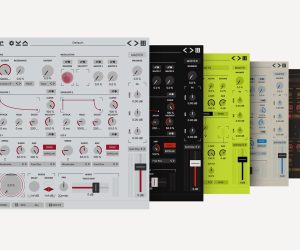
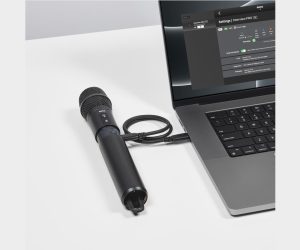
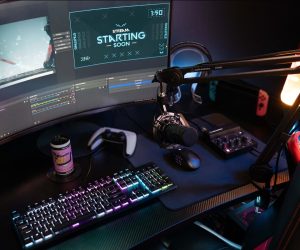
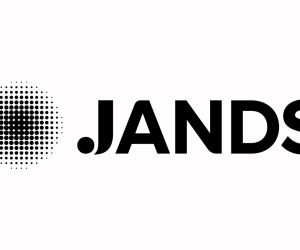
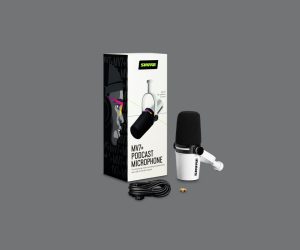
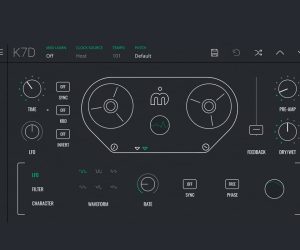
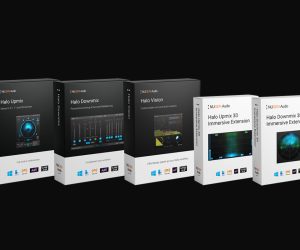
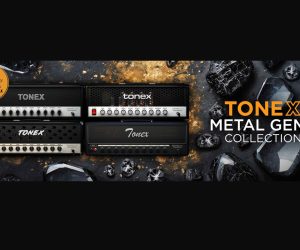


RESPONSES